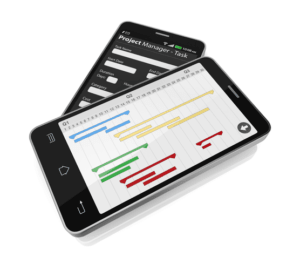
Hence, preliminary, company A could be the winner of the auction even though the labor hour used http://www.utopiaitalia.com/what-is-a-certified-public-accountant-cpa/ by company B is less, and units produced more only because its overhead rate is more than that of company A. CFO needs you as the cost accounting to calculate the overhead rate for this coming year. Base on the expectation from the budgeting department, the total overhead expenses would be $6,00,000. So, base on this formula, you need to know expected annual manufacturing overhead expenses. Use our Predetermined Overhead Rate Calculator to simplify your cost accounting process and stay ahead of your budgeting and production planning. Whether you’re managing a job shop, manufacturing facility, or service department, this tool gives you the clarity and control to allocate costs smartly.
- The activity base is typically measured in direct labor hours, direct labor costs, or machine hours, depending on the nature of the business.
- While predetermined overhead rates are widely used and needed for businesses, they may have some limitations.
- Its purpose is to enable timely decision-making regarding pricing, budgeting, and cost control.
- For example, knowing your overhead per labor hour allows you to determine how many units need to be sold to cover both fixed and variable costs.
- However, since budgets are made at the start of the period, they do not allow the business to use actual results for planning or forecasting.
Overhead Rate Meaning, Formula, Calculations, Uses, Examples

Different businesses have different ways of costing; some would use the single rate, others the multiple rates, while the rest may make use of activity-based costing. This consolidates overhead cost information from multiple sources, including payroll, point-of-sale, billing and more. With a unified data set, generating financial statements and calculating accurate overhead rates is streamlined. If Department B has overhead How to Run Payroll for Restaurants costs of $30,000 but direct costs of $70,000, then its overhead rate is 43%.
Hourly Pay Calculator Tool
Most businesses recalculate their rate annually as part of their budgeting process. However, if you experience significant changes in your operations or costs, you might want to recalculate mid-year. For example, if you add a new production facility, experience dramatic changes in utility costs, or significantly change your production methods, it makes sense to revisit your overhead rate. Overhead expenses are generally fixed costs, meaning they’re incurred whether or not a factory produces a single item or a retail store sells a single product. Fixed costs would include building or office space rent, utilities, insurance, supplies, and maintenance and repair. Unless a cost can be directly attributable to a specific revenue-generating product or service, it will be classified as overhead, or as an indirect expense.

Example of Applied Overhead Calculator

It also ensures that inventory values on financial statements include an appropriate share of indirect costs, which is a requirement under IRS regulations. Setting accurate predetermined overhead rates aids in better product costing and efficiency in financial operations, ensuring that all production costs are accounted for systematically. Traditionally, overheads have been absorbed in the product cost based on a single basis of apportionment.
Interesting Facts About Predetermined Overhead Rates
Again the actual overhead at the end of the accounting period is 1,575 and the overhead is said to be under applied by 81 (1,494 – 1,575) as shown below. Carefully minimizing overhead is crucial for small businesses to maintain profitability. Following expense optimization best practices and leveraging technology keeps overhead costs in check. This aids data-driven decision making around overhead rates even for off-site owners and managers. Built-in analytics help uncover spending trends and quickly flag unusual variances for further investigation. Allocating overhead this way provides better visibility into how much overhead each department truly consumes.
For instance, in a labor-intensive environment, labor hours were used to absorb overheads. On the other hand, the machine hours were used to absorb overheads in a machine incentive environment. For instance, it has been the traditional practice to absorb overheads based on a single base. For instance, a business with a labor incentive environment absorbs the overhead cost with the labor hours. On the other hand, the business with the machine incentive environment absorbs overhead based on the machine hours.
That is, the company is now aware that a 5-hour job, for instance, will have an estimated overhead cost of $100. Finally, if the business uses material costs as the activity base and the estimated material costs for the year is 160,000 then the predetermined manufacturing overhead rate is calculated as follows. The predetermined manufacturing overhead rate is more than a formula it’s a tool to keep costing, pricing, and budgeting predictable.
By determining this rate, businesses can enhance their pricing strategies and financial calculate predetermined overhead rate planning. As you’ve learned, understanding the cost needed to manufacture a product is critical to making many management decisions (Figure 6.2). Knowing the total and component costs of the product is necessary for price setting and for measuring the efficiency and effectiveness of the organization.

Predetermined Overhead Rate Formula You Need to Know
The predetermined overhead rate formula can be used to balance expenses with production costs and sales. For businesses in manufacturing, establishing and monitoring an overhead rate can help keep expenses proportional to production volumes and sales. It can help manufacturers know when to review their spending more closely, in order to protect their business’s profit margins. In order to estimate the predetermined overhead rate it is first necessary to to decide on an activity base on which to apply overhead costs to a product.

